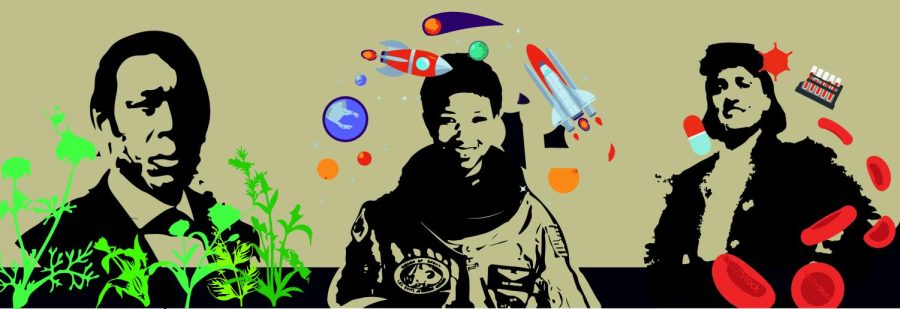Black pioneers in healthcare, wellness
February 8, 2022
February is Black History Month, dedicated to spreading awareness about the struggles Black people faced in the past and present. It also celebrates the achievements of Black pioneers throughout American history.
Every year a different theme focuses on a particular aspect of Black culture and experience. This year’s theme is Black health and wellness.
The health and wellness theme celebrates the contributions and breakthroughs of Black professionals and non-traditional health and wellness practitioners—herbalists, midwives, doulas and many others.
While the theme shines a light on the healthcare advancements of Black people, it also highlights the problems Black people face in healthcare daily. Some of these problems include lack of doctors in Black communities, access to healthcare and neglect from doctors, according to Medical Health Today.
The theme considers initiatives by Black communities to improve wellness despite past and current struggles.
James Still
James Still was an herbalist and homeopathic healer. Born in 1812, he was one of 18 children born to Levin and Charity Still, who were former slaves. When Still was three, a physician came to Still’s town to vaccinate children. This sparked Still’s interest in becoming a doctor. Just before Still turned 18, he was hired out as an indentured servant by his father. During the three years of his service, he read everything he could about medicine and botany. He even learned from Native Americans in the area. On his 21st birthday, he was released with $10 and a suit. Because of his race and lack of wealth, Still could not get into medical school. He continued to read and soon created a cough balm made from plants and herbs grown on his farm. His first patient used the balm successfully, which sparked interest from two pharmacists. They heard of his product and began buying all the cough balm he had. He used the money from the pharmacists to buy a small house where he took care of patients—both Black and white. His remedies became so successful that he was one of the biggest landowners and richest men in Burlington County, New Jersey.
Henrietta Lacks
In 1951, Henrietta Lacks visited The Johns Hopkins Hospital—one of the only hospitals that would treat Black patients—with complaints of vaginal bleeding. Dr. Howard Jones, a gynecologist, discovered a large, malignant tumor on her cervix. A doctor named George Gey snipped cells from her cervix without her consent. He found that Lacks’ cells doubled every 20 to 24 hours and were immortal. Her cells were then shared widely with other scientists. Today, these cells are nicknamed “HeLa” cells from the first two letters of her first and last name. HeLa cells have led to key discoveries in research on the effects of zero gravity in outer space, the development of polio and COVID vaccines and cancer research. Her cells have generated millions of dollars for medical researchers. Her family was unaware of the cell cultures for more than 20 years after her death. Doctors and scientists failed to ask for her family’s consent as they revealed Lacks’ name publicly, gave her medical records to the media and even published her cells’ genome online. None of the companies that benefited from HeLa cells have given money to Lacks’ family.
Mae Jemison
Mae Jemison was a doctor, engineer and NASA’s first Black female astronaut. Before becoming an astronaut, Jemison was a trained physician who dedicated her life to improving global health. In 1977, Jemison entered medical school at Cornell University where she studied international medicine. She graduated in 1981 and became a general practitioner. Soon after, Jemison joined the Peace Corps as a medical officer in Africa. There, she worked with the National Institutes of Health and the CDC on research projects, which included developing a hepatitis B vaccine. During her time in the Peace Corps, she learned about healthcare in developing countries. Once she returned to the U.S., she applied to be an astronaut for NASA. She was one of only 15 applicants accepted. As an astronaut, she learned about satellite telecommunications. After leaving space, she combined her knowledge in telecommunications and international medicine for the Jemison Group, which develops telecommunications systems to improve healthcare delivery in developing countries.



